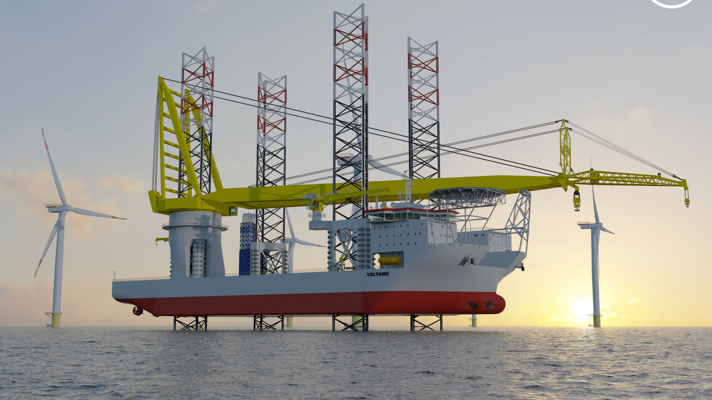Shipping emissions are a serious threat to human health. Therefore, Jan De Nul is fitting its new vessels with a state-of-the-art filter system, which processes exhaust gases and prevents nanoparticle emissions. This article explains the technology (with video).
Diesel air pollution is one of the main groups of carcinogens in our environment and shipping worldwide is lagging behind by far as regards particulate emissions. Even though research into the health effects of nanoparticles is still in its infancy, it is important to reduce emissions as a precautionary measure. Jan De Nul has therefore opted to prevent pollution of exhaust gases through detoxification, that is, treating the exhaust gases.
From SCR to DPF
Jan De Nul has called its new vessels equipped with the new filter technology Ultra-Low Emission Vessels (ULEVs). The working principles of the filter technology are as follows:
First, the exhaust gases pass through a selective catalytic reduction or SCR filter. By adding urea (NH3), NOx emissions are reduced. When the SCR filter is used, the engine runs in optimal condition, allowing it to use fuel more efficiently, and thereby reducing its carbon footprint; even taking into account the footprint of urea.
The exhaust gases then pass through a diesel particle filter (DPF). The DPF makes it possible to remove 99 per cent of all particles from the exhaust gases, while also eliminating black carbon. In the DPF, exhaust gases are forced to flow through a porous filter wall in which even the smallest lung penetrating and carcinogenic particles are captured.
Euro Stage V
The filter system allows vessels equipped with them to comply with the European Stage V regulations for inland waterway vessels. Stage V standards are phased-in from 2018 with full enforcement from 2021. Stage V regulation introduced a new limit for particle number (PN) emissions. The PN limit is designed to ensure that a highly efficient particle control technology, such as wall-flow particulate filters, be used on all affected engine categories. The Stage V regulation also tightened the mass-based PM limit for several engine categories, from 0.025 g/kWh to 0.015 g/kWh.
ULEVs on Order
Jan De Nul Group has ordered six ultra-low emission trailing suction hopper dredgers, part of the ULEV category. Five of these are being built at Keppel: three small ones with a capacity of 3500 m3 (the Afonso de Albuquerque, Diogo Cão and Tristão da Cunha), two medium-sized ones with a capacity of 6000 m3 (Ortelius and Sandero) and a larger vessel at 18,000 m3.
All six vessels are diesel-electrically powered, with engines allowing optimal use of generated power, but with low fuel consumption and emissions and are equipped with the special filter system.
The company's recently ordered jack-up giant Voltaire will also be an ULEV. For the Voltaire, this means it will run on gasoil while being fitted with the exhaust gas filtering system.
In addition, Jan De Nul has opted to use renewable fuels. All these measures together make that the company states it is able to operate 89 per cent climate neutral in the complete well-to-wake cycle.
The video below shows the working principles of the filter system.
Picture: With an unrivalled crane capacity of over 3000 t, Voltaire will be able to build the offshore wind farms of the future. The vessel is set to be delivered in 2022.








